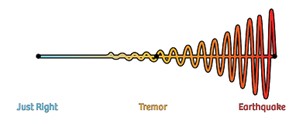Exploring Orlando: Educational Field Trips for Students
Educational field trips offer students something textbooks can’t—real-world immersion. By stepping outside the classroom, students in public or private schools in Orlando encounter hands-on learning that enhances academic understanding, nurtures curiosity, and fosters personal growth. Orlando, best known for its entertainment, also offers rich educational experiences in science, history, the arts, and faith-based learning.
The city provides powerful opportunities to inspire students across schools and grade levels with venues that align with curriculum goals. If you’re planning school trips Orlando educators can rely on, that combine education, excitement, and enrichment, this state is a perfect destination worth exploring for any field trip.
Science and Nature Attractions for Student Learning
1.Orlando Science Center (Engaging STEM Education)
At the Orlando Science Center, students can explore science in action. The center brings STEM subjects to life with interactive exhibits and hands-on activities. Exhibits cover physics, biology, chemistry, and environmental science in age-appropriate and engaging ways. Dedicated labs and structured educational programs allow students to experiment, test hypotheses, and think critically.
Using technology in education has become crucial, so whether students build simple machines or explore ecosystems, they learn through doing. This method is proven to deepen understanding and retention, and is a key benefit of field trips for schools in central Florida.
2.SeaWorld Education Programs (Learning Marine Science Firsthand)
SeaWorld’s educational offerings go far beyond its shows and rides. Their programs focus on marine biology, conservation, and animal behavior, giving students a close-up look at ocean life. The curriculum is tailored by grade level and meets national science standards, making it easy to integrate with classroom goals.
Educational field trips here include behind-the-scenes tours, expert-led discussions, and observation opportunities that connect students with marine science in a compelling, unforgettable way. It’s one of the most unique student field trip destinations in Florida.
3.Harry P. Leu Gardens (Environmental and Botanical Education)
Harry P. Leu Gardens provides a unique opportunity to explore plant science and sustainability. Spanning 50 acres, the gardens feature hundreds of plant species in various ecosystems. Guided field trips offer lessons on plant life cycles, ecosystems, and human-environment interactions.
Students can walk through butterfly gardens, study tropical plants, and learn how biodiversity impacts the planet. It’s an ideal field trip destination for teaching environmental stewardship and the science of living systems—perfect for Orange County Public Schools, Christian Schools, and other school groups.
History and Cultural Sites That Bring the Past to Life
4.Orange County Regional History Center (Exploring Florida’s History)
Located in downtown Orlando, the Orange County Regional History Center offers an in-depth look at central Florida’s past. Students will explore exhibits that trace the region’s journey from Native American settlements through pioneer life, the space age, and modern development.
Interactive displays and primary source materials encourage analytical thinking and historical inquiry. This museum supports the social studies curriculum and helps students connect historical events with real-world consequences. It is a top destination in Orlando field trip directories and an excellent stop for school trips Orlando educators can trust.
5.Fort Christmas Historical Park (Experiencing Early Florida Life)
For a step back into the 1800s, Fort Christmas Historical Park is a standout. Students can explore fully reconstructed pioneer homes, a replica fort from the Seminole Wars, and other period buildings. Costumed interpreters offer insights into daily life during early Florida settlement.
This hands-on experience immerses students in frontier history, allowing them to compare past lifestyles to the present and develop a firmer grasp of American colonial history—a staple of well-rounded educational field trips.
6.Holocaust Memorial Resource and Education Center (Teaching Historical Empathy)
The Holocaust Memorial Center offers a powerful learning experience centered on human rights and social justice. Through guided tours, exhibits, and survivor testimonies, students gain insight into the events of the Holocaust and its lasting impact.
The center’s age-appropriate educational programs promote empathy, ethical reflection, and critical thinking. This venue is particularly effective for older students studying World War II, civil rights, or ethics, making it one of Orlando’s most impactful student field trip destinations.
Arts and Innovation Destinations That Inspire Creativity
7.Orlando Museum of Art (Exploring Visual Arts and Expression)
Creativity takes center stage at the Orlando Museum of Art. Students are guided through galleries that span modern art, classical works, and cultural artifacts. Interactive activities encourage them to analyze and interpret visual elements; some programs include time for students to create artwork.
Field trips align with visual arts standards, promoting skills such as observation, critique, and expression while fostering appreciation for cultural diversity through art. The museum provides an inspiring field trip environment for schools.
8.Dr. Phillips Center for the Performing Arts (Behind-the-Scenes Performing Arts Education)
At the Dr. Phillips Center, students go behind the curtain to see what makes the performing arts come alive. Workshops and backstage tours reveal the intricacies of lighting, sound, choreography, and set design. Programs often include sessions with performers or technicians, offering a hands-on understanding of theatre and music.
These experiences help students grasp the collaborative nature of the arts while sparking creativity and self-confidence. It’s one of the best field trips in Orlando for aspiring performers.
Theme Parks Offering Structured Educational Programs
9.EPCOT’s Disney Imagination Campus (Learning Through Innovation and Culture)
EPCOT offers a unique blend of entertainment and education through the Disney Imagination Campus. Programs here explore storytelling, physics, world cultures, and innovation. Students might learn the science behind Disney’s rides or participate in global studies in the World Showcase.
Each program is designed with academic goals in mind and led by trained facilitators. This ensures students have fun while learning concepts that relate back to classroom lessons. It is great for school trips Orlando teachers can rely on.
10.Universal Orlando Youth Programs (Discovering Media, Science, and Arts)
Universal Orlando isn’t just about thrills; its youth programs dive deep into the science and artistry behind filmmaking, animation, and theme park design. Students participate in sessions that explore physics, narrative structure, and engineering through a pop culture lens.
Programs support STEM and creative writing standards, showing students how academics power real-world careers. From designing their scenes to analyzing special effects, the learning is exciting and relevant for any student field trip.
Field Trips That Incorporate Christian and Faith-Based Learning
12.Biblical Learning Through Historical Exhibits and Institutions
Although The Holy Land Experience has closed, Orlando still provides enriching faith-based options. Museums and traveling exhibits focused on biblical history, artifacts, and Christian culture offer immersive educational field trips.
These field trips allow students to connect Scripture with historical events, providing a visual and contextual understanding of biblical times and principles. Programs often include guided discussion, reflection, and scriptural integration for school and church groups.
13.Church Visits and Religious Landmarks with Educational Value
Local historic churches and religious centers can also serve as excellent student field trip destinations. These trips can include guided tours, service-learning opportunities, and lessons on religious heritage and community impact.
For Christian schools or homeschool groups, such visits provide a chance to blend academic and spiritual learning while encouraging values like compassion, stewardship, and leadership. Many offer lunch options and age-appropriate programs.
Tips for Planning Safe and Effective Field Trips
Successful field trips start with clear goals and detailed planning. Here are a few tips to help you plan a fun and educational field trip:
Match destinations to your educational objectives—science, history, art, or faith.
Choose programs designed for your students’ age and learning level.
Always verify safety measures, staff-to-student ratios, and accessibility features.
Build in time for breaks, lunch, reflection, and flexibility.
Work closely with venues that offer structured educational programs. They often provide resources, guides, and tools to help maximize learning.
Consider logistics like budgeting, transportation, and permissions early to avoid last-minute issues.
When planned well, a field trip becomes more than a change of scenery; it becomes an unforgettable educational milestone for visitors from schools across central Florida, including Christian schools and those in the Orange County Public Schools system.
Discover Purposeful Learning with The Christ School
At The Christ School, we believe education extends beyond the classroom and into the world God created. Our thoughtfully planned field trips in Orlando connect academic excellence with spiritual growth, inspiring students to learn purposefully. Join our community where faith and learning go hand in hand—discover more at The Christ School.























